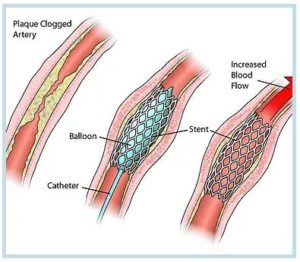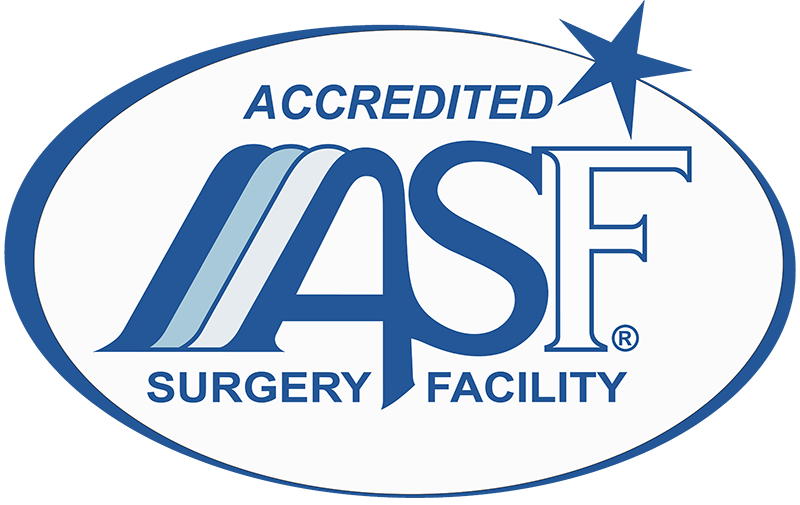ANGIOGRAM
An angiogram is an X-ray procedure that can be both diagnostic and therapeutic. It is considered the gold standard for evaluating blockages in the arterial system. An angiogram detects blockages using X-rays taken during the injection of a contrast agent (iodine dye). The procedure provides information that helps your vascular surgeon determine your best treatment options.
Angiograms is typically performed with use of local anesthetic and intravenous pain medication. The procedure may last 15-20 minutes or up to several hours, depending on how difficult the test is and how much treatment is given.
Why It’s Done
This procedure is performed if you have blockages in arteries that are causing symptoms.
Risks
All invasive procedures can have complications. While the risk of an angiogram is low it is not zero. The most common complications are related to the arterial access site.
BRUISING IS COMMON
You will likely have bruising (ecchymosis) where the artery was entered.
PAIN AND BLEEDING
Less commonly, patients experience pain and bleeding that may include blood collecting under the skin (hematoma).
BLOCKAGE OR LEAKAGE
In rare cases, the access artery can become blocked. Infrequently, patients experience persistent leakage of blood where the artery was entered, which can result in the formation of a pseudoaneurysm—a blood-filled sac—that may require further treatment.
KIDNEY DYSFUNCTION
Use of IV contrast (dye) may cause abnormal kidney function. The risk of kidney dysfunction in individuals with prior normal kidneys is extremely low especially with preventative measure are taken e.g. use of IV hydration starting before the procedure and continued until discharge.
Other complications related to an angiogram include:
Allergic reaction to the iodine contrast dye, which can lead to the development of kidney failure.
Very rarely during balloon angioplasty and/or stent placement, part of the arterial blockage can break off (embolism) and travel to more distant arteries. This can worsen blood flow.
How to Prepare
Your vascular surgeon will specify how to prepare.
You will likely need to stop eating and drinking 6-8 hours before the procedure.
Occasionally, certain medications may need to be stopped e.g. Metformin (Glucophage) and certain blood thinner e.g. Coumadin, Xarelto etc.
What Can I Expect After Test?
Angiograms (with or without balloon angioplasty/stenting) are considering outpatient procedures and patients usually go home the same day.
After the procedure, expect 4-6 hours of bed rest to avoid bleeding at the artery access site.
You will not be able to drive yourself home. Be sure to arrange for transportation after the procedure.
Once home, you should avoid heavy lifting, stooping or bending for 2 days to reduce the risk of bleeding at the arterial puncture site. Most other activities can be resumed.
Call your doctor’s office if:
● You notice bleeding, new bruising or swelling at the catheter site
● You develop increasing pain or discomfort at the catheter site
● You have signs of infection, such as redness, drainage or fever
● There’s a change in temperature or color of the leg or arm that was used for the procedure
● Weakness or numbness in the leg or arm where the catheter was inserted
● You develop chest pain or shortness of breath
If the catheter site is actively bleeding and doesn’t stop after you’ve applied pressure to the site, contact 911 or emergency medical services. If the catheter site suddenly begins to swell, contact 911 or emergency medical services.
Description
An angiogram is commonly performed under sedation with the use of local anesthesia.
The procedure usually starts with injection of a local anesthetic at the access site (typically a groin, foot or wrist blood vessel) a needle is then put into the artery. From one treatment site, areas all over the body can be treated.
After access is established, catheters (thin tubes) and wires are used next and are threaded through the arterial system to a specific area of interest or throughout the entire body.
As a contrast agent (iodine dye OR Carbon dioxide gas CO2) is injected, X-ray images are taken to let your vascular surgeon view the flow of the dye and identify blockages. Your vascular surgeon can then choose the best mode of therapy for you – whether during or following the angiogram. This decision depends on your symptoms and the severity and characteristics of the blockages.
Generally the therapies that can be provided during the angiogram include atherectomy (debulking the hard calcified plaque), balloon angioplasty with or without stent placement. Sometimes, a special ultrasound (IVUS) may also be used during this procedure to further facilitate diagnosis and/or treatment.
Angioplasty refers to use of a balloon to open arterial blockages. Guided by X-ray, your vascular surgeon navigates through the blockage with a wire and introduces a special device equipped with an inflatable balloon. After positioning the balloon device across the blocked portion of the artery, the balloon is expanded inside the artery and compress the blockage. The balloon is then deflated and removed while keeping the wire in place across the area that has been treated. Next, contrast dye is injected to assess the result. Treatment is considered a success if blood flow is improved and less than 30% of the blockage remains. If the vessel is still considerably narrowed, placing a stent may be the next step.

Stents are used to prop open an artery at the site of a narrowing. Stents are generally placed after balloon angioplasty when there is residual narrowing or insufficient blood flow in a treated vessel. Stents are considered a permanent implant and cannot be used if you have a metal allergy. Stents that are used in the leg are constructed of a nickel-titanium alloy (Nitinol), a memory-shaped metal. This alloy has a predetermined size and shape at body temperature and expands to this size and shape after being introduced through a catheter. These stents resist kinking and are flexible so that damage from activities that involve your legs is minimized.
If surgery is felt to be a better option, your vascular surgeon will obtain any additional X-ray images needed to plan a surgical bypass of the blocked vessel/s and will then conclude the angiogram.
Quit Smoking. Eat Healthy. Exercise.
Complete the math problem above to prove you are human.


